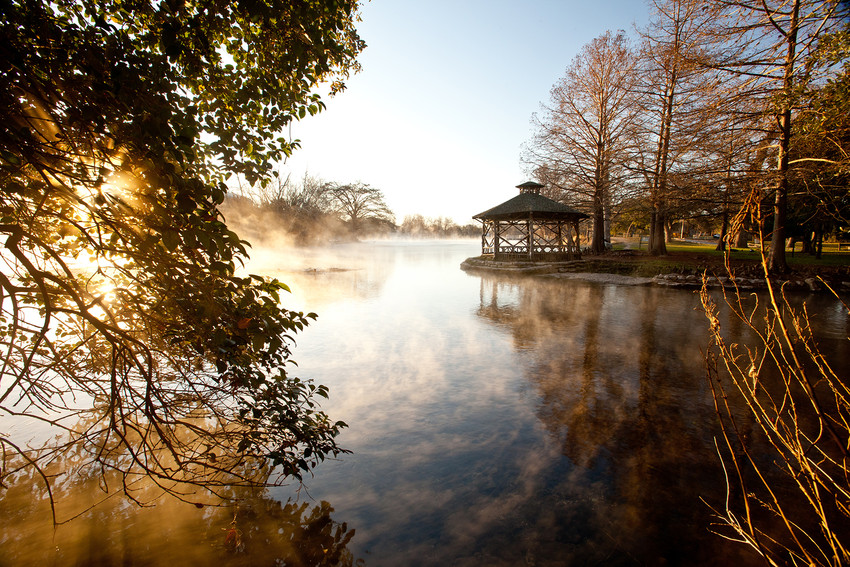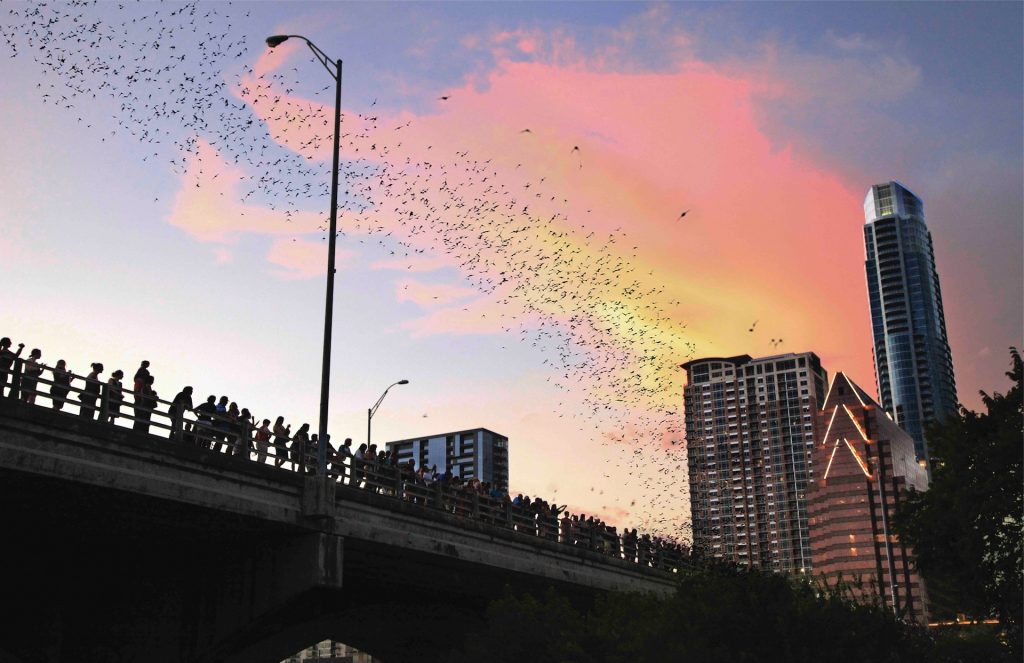by Liebadmin on 10 January 2020
Texas from the frog and bird’s eye view
Of giant frogs, feathered dancers and monstrous swarms of insects
Berkel and Rodenrijs – January 10, 2020 – In the second largest state in the USA there is a big crawling and flapping: frogs, birds, butterflies and bats – in Texas not only ornithologists and amphibian lovers get their money’s worth, but also all tourists who enjoy animal spectacles. For example, a cozy summer evening is sweetened with a free frog concert, while a bird performs its dance on the water …
A frog as big as a cow: The North American bullfrog in the Texas swamps
Whether on land or underwater, Texas is the habitat of over 225 species of reptiles and amphibians. But one croaks louder than all the others: the American bullfrog. This special species may not reach the size of an ox, but it is up to 20 centimetres long and can weigh several kilograms. It feels particularly at home in the dense riparian vegetation of the southeast Texas swamps and marshlands and can be recognized from afar by its deep quack. So: Open your ears and enjoy the free concert.
A dance on the water: The Reddish Egret in the coastal wetlands
Curtain up and stage set for the wave dancer of Texas: With only an estimated 3,500 to 4,250 breeding pairs, the Reddish Egret is the rarest heron species in North America – but also one of the most extraordinary. Once hunted as a popular trophy to decorate ladies’ hats with its feathers, visitors today can enjoy a special spectacle: unlike other heron species that stand still while fishing, the long-legged Reddish Egret pounces on its prey in a seemingly uncoordinated run. The chances of seeing such a show are good, as the coastal waters around the Gulf of Mexico have the largest population in the country.

A sky full of migratory butterflies: The Snout Butterfly in South Texas
When the sky darkens, cars stop and a gentle flap of wings is in the air – then the American Snout Butterfly is on its migration through South Texas. In huge swarms of up to 75 million individuals, the butterfly with the distinctive head travels hundreds of kilometers across the state and can fly as far as the east coast of Canada. In 1916, one flock is said to have been so dense that street lighting had to be switched on during the day …
Batman among his peers: The Austin Bat Colony
As the sun goes down, not only Austin’s nightlife awakes, but also millions of bats living under the Ann W. Richards Congress Avenue Bridge. This largest urban colony in the world migrates every year from Mexico to Texas, where it finds an ideal summer home in the gaps and crevices of the bridge. The animals are not only useful as they hunt mosquitoes along the Colorado River, but also offer a real spectacle every evening when they leave the bridge in droves.
